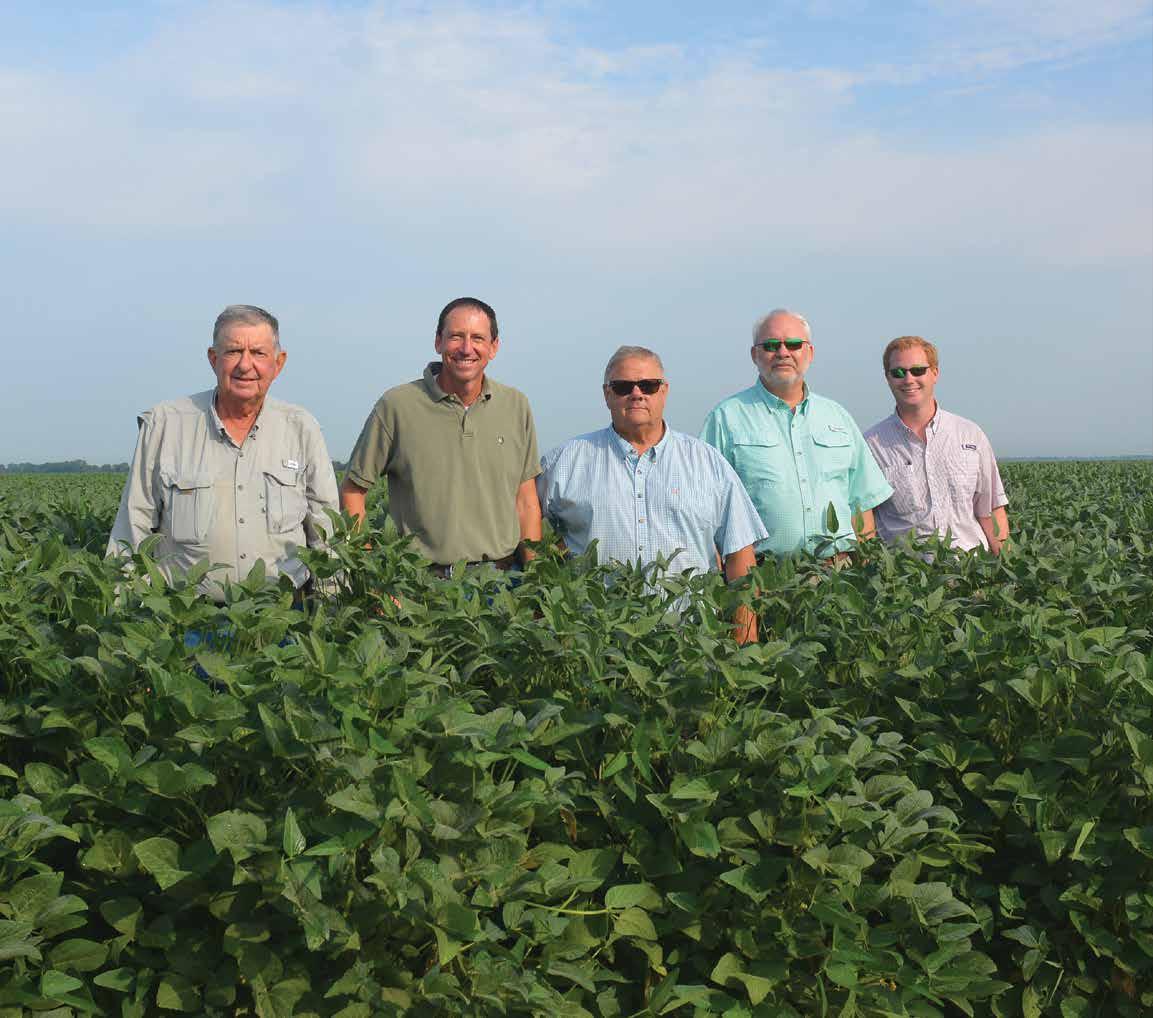




By Kaley Jo Baker
The McLain Family currently operates around 3,000 acres with 650 acres of rice, 400 acres of corn, and 1,950 acres of soybeans.
Many years ago, Jay McLain began his farming career. Though he can’t remember a time when he wasn’t on the farm, his true farming career started when he was a senior in high school and the opportunity became available to rent 160 acres. Him and his father, Wilbur Joe, split the land 50/50, which allowed McLain to put himself through college, graduating from Arkansas State University in 2003. While in college, Jay met his wife, Megan. Going to a large college and meeting the person you marry that lives less than 40 miles away is almost unheard of. Especially when you never knew them prior. Jay was from the Point Deluce area and Megan from Stuttgart. Even though they lived in the same county growing up, they didn’t know each other at all until a mutual friend introduced the two. They married in the spring of 2005 and the two started a life together
Not only did Megan grow up near Jay, but her family was also a farming family. “By growing up in a farm family, she understands the challenges and importance of farming,” Jay stated. The two continue to live on the family farm in the house where his father, Wilbur Joe started farming. They have three daughters, Mollie who is 11, Macie who is 9, and Micah who is 3. “We are proud to continue our family’s legacy,” Jay said. “We hope our children will also carry on the family tradition.”

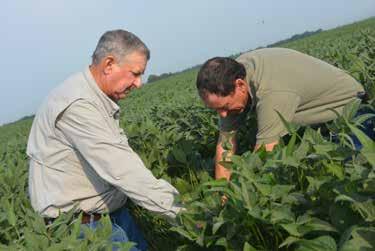
a more in depth look
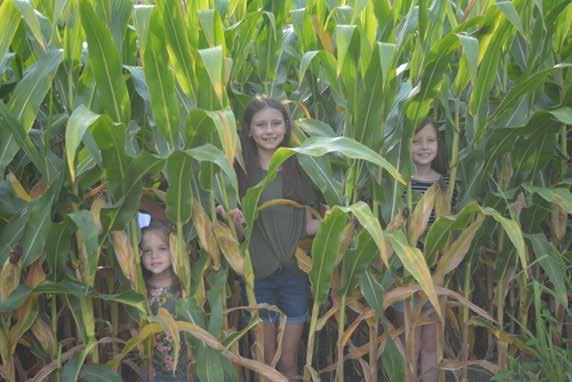


By Jay McLain


My
He continued
as
put himself through
first in Beebe, then in Jonesboro. After graduating college, he returned to work full time for Mr. Reinhart for two more years. In 1975, he was given an opportunity to crop rent 320 acres in DeWitt. He moved to the community Pt. DeLuce and started his farming career. In December of 1976 he married my mother, Vickie Ruffin, and continued to expand his farming operation.
In 1999 while I was a senior in high school, my Uncle Donald Lee Ruffin had 160 acres of land come up for rent. Dad and I rented the farm ½ and ½ and I have been farming it ever since. Looking back, I think it was important to be able to make my own decisions at an early age, even
if it was only on a small percentage of the farm. By being able to farm on my own and with the help of several scholarships, I was able to put myself through college. I graduated from Arkansas State University in 2003 with a degree in Agriculture Business and came back to the farm full time. While in Jonesboro, I met Megan Longnecker and we married in the spring of 2005. Megan also comes from a farm fami-
ly. Her dad, uncle and grandfather all farm together in Stuttgart. By growing up in a farm family, she understands the challenges and importance of farming. We continue to live on the family farm in the house where my dad first started farming. We are proud to continue our families’ farming legacy and hope our children will carry on the family tradition.
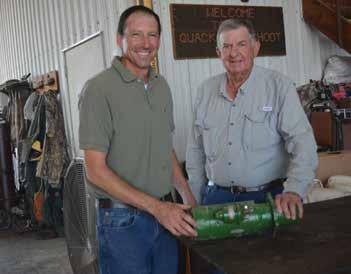
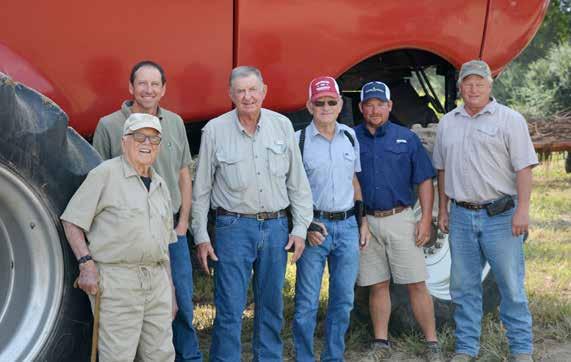
Congratulations and God bless you! From the James Phillips Farm 2021 South Arkansas County Farm Family of the Year Jay & Megan McLain Family




What can I say? Growing up, I was always around farmers. My family were farmers and that is all I knew. I always knew I’d get married one day, but the big question was to who? What would my life be like? Where would I live? Little did I know I would be raising a family on our own farm less than 40 miles south of my home place in Stuttgart, Arkansas. When meeting Jay in college through a mutual friend, I quickly began to realize that the life I had always knew, was probably going to be the life I’d live forever. Jay and I married in the spring of 2005 and soon after started a life together in Point Deluce, Arkansas.
Being a farmer’s wife isn’t always the easiest of tasks. You deal with late nights, and early mornings, spur of the moment obstacles and important decision making. One thing I always try to do is have Jay a meal waiting on him after a long day on the farm. Having three girls keeps me very busy, as we are always running to activities, practices, and school functions, but one thing about living in a farming community is you have friends to help with that as well. There will be days that my friends will help with the girls, while I take the others to differ-
ent activities. And for that I am extremely grateful!
My mother and Vickie are also a huge help during our busy season. It takes a team, that is for sure!
I graduated with a Bachelor’s in Social Work from ASU in 2003 and a Master’s in Social Work from UALR in 2005. I worked for Stuttgart Regional Medical Center, now known as Baptist Health Stuttgart, doing discharge planning services for the hospital. In 2008, I took a job with Pinnacle Pointe Hospital in Little Rock doing outpatient school-based therapy. I provided individual therapy, group therapy, family therapy and crisis intervention. I worked for Pinnacle Pointe Hospital until 2017 when I became a stay-at-home mom and began taking on a more active role in helping Jay on the farm. I have spent much of my time the last few years helping Jay move fields, taking him and the crew a lunch to the fields, paying farm bills, and running errands.
Being the wife of a farmer has its obstacles, but there is nothing more I’d rather do than to raise a family with Jay on his family farm. I am thankful to pass down Christian values to our children that our families instilled in us. I will always be forever grateful.
By Megan McLain




From one generation of McLain farm girls to


407 S. Main Street, Stuttgart, AR (870) 673-0500
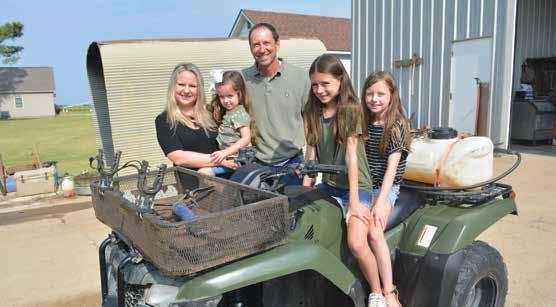
The COVID-19 pandemic created a spike in global rice prices in the second quarter of 2020, according to a new University of Arkansas System Division of Agriculture report. Since then, rice prices have remained higher than expected despite ample rice stocks and a record 2020 global rice production.
“Most commodity prices went down during the pandemic because of lower demand,” said Alvaro Durand-Morat, assistant professor of agricultural economics and agribusiness for the Arkansas Agricultural Experiment Station, the Division of Agriculture’s research arm. “But rice went the other way.”
Durand-Morat is co-author with research post-doctoral associate Subir Bairagi of International Rice Outlook: International Rice Baseline Projections 2020-2030. This is the full report available from the Agricultural Experiment Station online: https://bit.ly/ AAES-RiceOutlook
“The importance of our report is the international view of the rice markets. It is one of the few international outlooks out there,” Durand-Morat said. “It’s essential from a policy standpoint for farm bills and trade negotiations for a crop like rice where half of it is exported. What happens with our trading partners affects us directly.”
Arkansas is the nation’s leading rice growing state, producing more than 40 percent of the U.S. rice crop, bringing in around $1 billion per year in cash farm receipts, according to the 2020 Arkansas Agriculture Profile, published by the Division of Agriculture and available for download: https:// bit.ly/AAES-AgProfile2020. Arkansas is also the nation’s leading rice exporter, accounting for about half of all rice from the U.S., Durand-Morat said.
Ratchet up
Because of pandemic concerns in some leading rice exporting countries, rice prices surged when other commodities declined, Durand-Morat said.
“Large exporting countries like Vietnam, India and Myanmar reduced exports to see how they

By Fred Miller U of A System Division of Agriculture
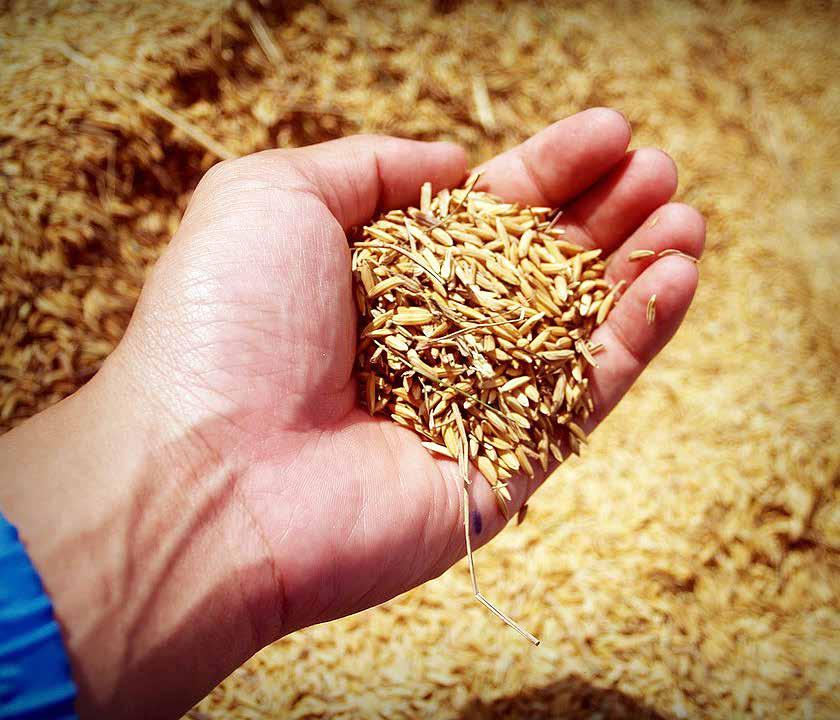
would fare during the pandemic,”
Durand-Morat said. “They wanted to secure the domestic supply. Vietnam actually banned exports for a couple of months.”
By August 2020, Durand-Morat said, prices of all commodities began to go up. “Some went up really high.
“Rice prices are still high, though lower than the peak months of the COVID-19 lockdowns,” he said. “But they are still higher than pre-COVID. This is despite global rice supplies being high.”
10-year outlook
“We project global rice production will surpass global rice consumption for most of the coming decade, with a small deficit developing by the end of the projected period,” Durand-Morat said.
Durand-Morat expects rice
production to grow despite a decline in rice acres by 2028-2030. The production gains will be exclusively because of improvements in yields. Global rice consumption will also rise based only on population growth while per-capita consumption of rice stagnates.
“The international prices of long-grain and medium-grain rice is projected to increase nominally,” Durand-Morat said. “But they will decrease in real terms — because of inflation and ample rice supplies.”
The world rice production and consumption map is likely to change over the next decade, Durand-Morat said.
“At the country level, rice production is projected to decrease in China, South Korea and Brazil, and grow the most in Tanzania, Madagascar, Egypt and Nigeria,”
Durand-Morat said.
“Total rice consumption is projected to decline in Japan, South Korea and Brazil,” he said. “It will increase strongly in Iran, Madagascar and Nigeria. These increases will support fast growth in regional production and imports.”
This change has been going on for decades, Durand-Morat said.
“The populations are stable or decreasing in Japan and South Korea. And people are making other food choices. In Brazil, despite population increases, people are also making other food choices, mostly because the population increases are concentrated in the central and northern regions where rice is not a big staple.”
Rice consumption is going up in Africa, Durand-Morat said, because of a combination of population growth outpacing production






and investment in research and development by USAID, Japan and other countries.
“They discovered rice, and they love it,” Durand-Morat said. “When people move to the city, they eat more rice because it’s easier to prepare than a native staple like casava.”
Global trade
“These differential changes in production and consumption across countries will push global rice trade to new records,” Durand-Morat said.
Rice exports will continue to be concentrated among the top five largest exporters, he said. “India will continue to be a leader in exports. Thailand is projected to secure its place as the second-largest exporter of rice.”
Durand-Morat said the global rice market is subject to many factors that could alter projections.
“The key factors to watch will be China’s rice stock management, India’s yield and overall production trend, and the price gap between Asian and American longgrain rice,” Durand-Morat said.
Durand-Morat said rice growers’ check-off dollars, administered by the Arkansas Rice Research and Promotion Board, support the Division of Agriculture’s rice baseline reports. “We get great support from the Rice Board,” he said.
The publication is researched and developed in collaboration with FAPRI, the Food and Agriculture Policy Research Institute based at the University of Missouri.
“FAPRI uses U.S. rice numbers that come from us to build their U.S. models,” Durand-Morat said. “What we do is couple our model with the FAPRI models to develop projections for international markets.”
To learn more about Division of Agriculture research, visit the Arkansas Agricultural Experiment Station website: https://aaes.uada. edu/. Follow us on Twitter at @ ArkAgResearch
To learn more about the Division of Agriculture, visit https:// uada.edu/. Follow us on Twitter at @AgInArk

















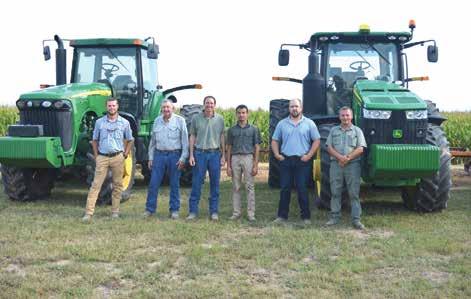


















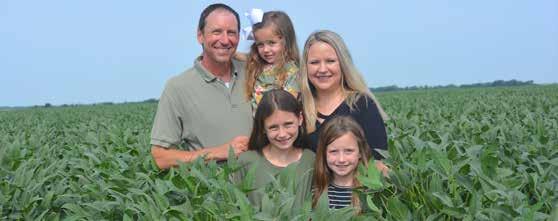






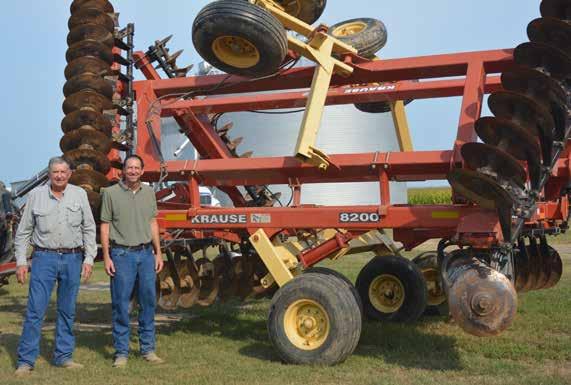






When it comes to farming, you are sometimes working with razor thin margins. When producing a bulk commodity, the lowest cost producer is usually the most successful. A few ways that Jay works to lower cost of production is to pull soil samples, work with the local extension service, and to run older, but well-maintained equipment. When pulling yearly soil samples, it helps Jay to only apply the nutrients the crop needs. Not only does it save a lot of time, but it saves a lot of money as well. Jay said that working
By Kaley Jo Baker
closely with the extension service helps him to use the best management practices to ensure he gets the best crop yield as possible.
Also, Jay tends to focus on the equipment maintenance during the winter months in order to save him time and money during busy season. He believes in keeping his equipment serviced and up to date. “New equipment is expensive, and you have to take care of what you have,” he said.





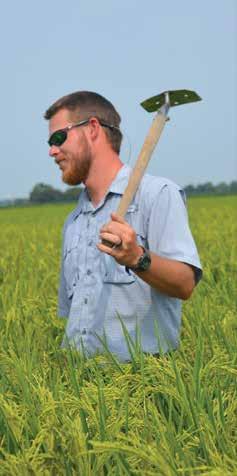
















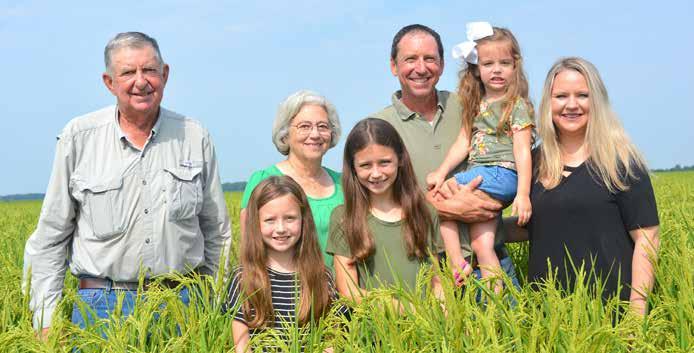
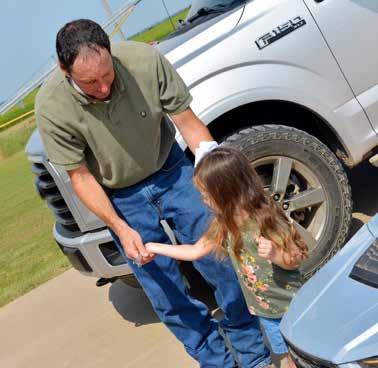

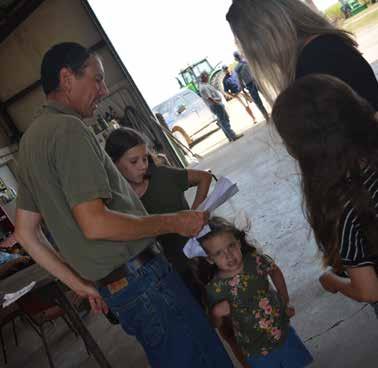



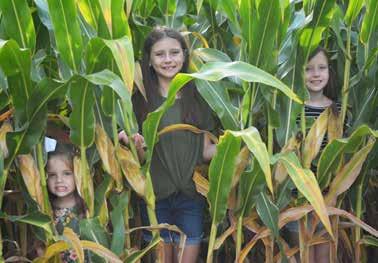






Congratulations to Megan, Jay & Family!!!
Best wishes for continued success, Bill Shrum
Ingredients:
1 stick butter
½ cup onion chopped
2 cans chicken broth
2 cans cream of chicken or mushroom
4-6 drops liquid smoke
4 ½ to 5 cups cooked rice
Celery salt, optional
Ingredients: 1 cup shortening 1 ½ cup sugar 2 eggs
2 ¾ cups flour
2 tsp cream of tarter 1 tsp baking soda ½ tsp salt ½ cup sugar
Instructions: In large skillet, soften onion in butter, add in chicken broth and soup, stir until well mixed. Add liquid smoke. Fluff rice with fork, add rice to mixture. Simmer about 20 minutes.
Directions: Cream shortening & sugar until well blended. Add 2 eggs, beat well. Sift flour, cream of tartar, baking soda and salt. Mix well with the creamed mixture. In a small bowl combine sugar and cinnamon. Shape cookie dough into 1 inch balls. Roll in sugar/cinnamon mixture. Place 2 inches apart on ungreased cookie sheet and bake at 400 degrees for 8-10 minutes.
1 box swiss chocolate cake mix
3 eggs ½ cup oil 1 ½ cup milk
1 small instant vanilla pudding mix
Icing: 1 cup powdered sugar
½ cup sugar
4 Hershey’s bars
1 (8oz) package cream cheese
12 oz cool whip
Directions: Shave or cut candy bars into small pieces and mix with the icing. Ice your cake. For a white chocolate cake: For cake, substitute white cake mix and white chocolate instant pudding. For the icing, substitute white chocolate bars (Nestle white chocolate crunch bars or 3 (2oz) white chocolate bars for baking.
Brown one medium onion until clear in 2 tablespoons of oil. Add 1-2 pounds of hamburger meat and brown. Drain the fat. Add 3 tablespoons of chili powder (or to taste), 3 tablespoons of flour, 1 teaspoon, 1 teaspoon sugar, pepper to taste. Next
add a large can of tomato sauce, two large cans of hot water (use the tomato sauce can) and 1 can of kidney or chili beans. Bring to a boil, lower heat and simmer for 45 minutes.


Ingredients:
½ butter
¼ cup whipping cream
1 cup firmly packed brown sugar Pecans
1 chocolate cake mix Cool whip
Ingredients:
1 Block of cream cheese
(drained)
Ingredients:
1 cup sugar
Directions: Mix together butter, whipping cream and firmly packed brown sugar. Heat until butter and sugar have melted. Spoon mixture into two cake pans that have been sprayed with a non stick product. Sprinkle with pecans. Use a favorite chocolate cake mix batter on top as per directions. Bake at 325 degrees for 40 minutes. Cool completely. Layer and frost with cool whip.
Directions: Melt butter and cream cheese on the stove stir in corn and green chilies. Add salt and pepper to taste. Heat until.
3 tablespoon cocoa (heaping)
3 tablespoon flour or cornstarch
¼ teaspoon salt
2 cups milk
3 egg yolks
1 teaspoon vanilla
2 tablespoons margarine
Ingredients:
Combine sugar, cocoa, flour, and salt then add milk and egg yolks. Cook on medium heat until thick, stirring continuously. Then add vanilla and margarine. Pour into cooled pie crust. Top with meringue. Bake at 350 degrees until meringue is golden brown.
3 to 4 cups sliced apples
1 tablespoon lemon juice
1 teaspoon vanilla
1 cup sugar
1 teaspoon cinnamon
1 tablespoon flour
½ stick margarine
Directions: Toss apple slices, lemon juice and vanilla together gently. Mix sugar (1 cup or more according to apples), cinnamon and flour. Pour over apples. Put ¼ stick of margarine on bottom of pie crust. Put in apple filling and top with ¼ stick margarine. Put top crust in place and bake at 400 degrees for 15 minutes then reduce heat to 350 degrees and bake 40 more minutes.




Duncan Hines yellow deluxe cake mix
¾ cup oil
¾ cup water plus 1 tablespoon
4 eggs
1 package instant pistachio pudding
½ cup chopped pistachios
Glaze:
2 cups powdered sugar
4 tablespoons melted butter
1 can beef consommé (if you can’t find it you can use beef broth)
1 can French onion soup
1 cup uncooked rice
3 to 4 tablespoons of butter
Preheat oven to 350 degrees
Cook covered for one hour
¼ cup water 1 teaspoon vanilla Instructions:
Preheat oven to 350 degrees. Mix cake mix, oil, water, eggs, and pudding. Pour into a 9x13 pan. Sprinkle ½ cup pistachios on batter. Bake for 35-40 minutes. Mix glaze well and pour over hot cake.
1 pound ground chuck
Preheat oven to 350 degrees. Mix ingredients together and shape into balls. Place into an ungreased 9 x 13 baking dish. Mix 2 8 oz cans of tomato sauce and 1 T. Worcestershire sauce. Pour over top of the meatballs and cover and bake for 45 minutes. Uncover and bake for 15 minutes longer.



Deadline to submit samples is Nov. 1
Testing for seven different herbicides
STUTTGART, Ark.
— The University of Arkansas System Division of Agriculture is accepting samples to test for herbicide resistance in barnyardgrass and other weed species in rice.
Forms are available from your county extension office. (Find your county office at uaex.uada.edu/counties).
The deadline to submit samples is Nov. 1.
“This screening will give us some idea if a producer has been using the wrong herbicide,” said Jason Norsworthy, professor and weed scientist for the Division of Agriculture.
To submit samples:
Collect approximately 25 mature barnyardgrass seedheads and place in a paper bag.
If other weed species are being collected for screening, make sure there are ample seeds available. Use a separate bag for each weed species.
Send one sample per species per field.
“If an individual has more than one field where herbicide failure occurred, they are welcome to send multiple samples,” Norsworthy said. “The sample identification form that accompanies every sample will ask for GPS coordinates and a field name in addition to other information.”
Norsworthy said it’s important to collect mature samples “if we’re not able to germinate them, the tests won’t work.”
The screenings will look at
seven herbicides: glyphosate, clomazone, propanil, quinclorac, imazethapyr, cyhalofop, and florpyrauxifen-ben-
those who submitted samples will be notified by the county agent.
“This type of testing has
submitted for screening has increased in recent years. In the last four years, approximately 150 samples are sub-
Board. To learn about extension programs in Arkansas, contact your local Cooperative

zyl. Norsworthy said results will be returned to county agents in late February or first week of March and
been ongoing since the early 1990s following the confirmation of propanil-resistant barnyardgrass,” he said. “The number of samples
By Kaley Jo Baker

The number one way to decrease soil erosion on the McLain’s farm is by limiting fall fieldwork on susceptible fields. Jay said, “We have also used land leveling and drop pipes to help with soil erosion.” Jay began no tilling about 25 years ago in their soybean and wheat rotations. When they stopped growing wheat about 10 years ago and started putting corn in the rotation, they got away from using it much. The last four years they have experimented with no till and a cover crop system on the corn and soybean rotation. “We still have some work to do to perfect it, but we are excited to continue trying to find a fit for it in our operation,” explained Jay.
mitted for evaluation each fall.”
The testing is free and funded by the Arkansas Rice Research and Promotion
Extension Service agent or visit www.uaex.uada.edu
Follow us on Twitter and Instagram at @AR_Extension. To learn more about Divi-
sion of Agriculture research, visit the Arkansas Agricultural Experiment Station website: aaes.uada.edu. Follow on Twitter at @ArkAgResearch. To learn more about the Division of Agriculture, visit https://uada. edu/. Follow us on Twitter at @AgInArk.
About the Division of Agriculture
The University of Arkansas System Division of Agriculture’s mission is to strengthen agriculture, communities, and families by connecting trusted research to the adoption of best practices. Through the Agricultural Experiment Station and the Cooperative Extension Service, the Division of Agriculture conducts research and extension work within the nation’s historic land grant education system.
The Division of Agriculture is one of 20 entities within the University of Arkansas System. It has offices in all 75 counties in Arkansas and faculty on five system campuses.
The University of Arkansas System Division of Agriculture offers all its Extension and Research programs and services without regard to race, color, sex, gender identity, sexual orientation, national origin, religion, age, disability, marital or veteran status, genetic information, or any other legally protected status, and is an Affirmative Action/Equal Opportunity Employer.
Arkansas County’s
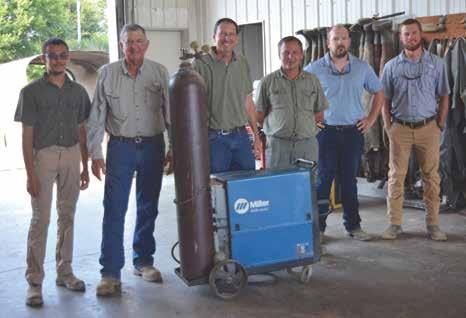


By Phil Horton, County Extension Agent – Agriculture
Suspected Herbicide-Resistant Weed
Seed Screening
It’s that time of year again. If you have barnyard grass samples that you would like screened for herbicide resistance, please make sure of a couple of things:
Make sure the seed is fully mature (black and hard). If the seed is not completely mature, we will not be able to get a good enough germination rate to fully screen the population.
An information sheet showing previous crops and herbicide programs used can be obtained from the Arkansas County Extension office. This provides much needed background information as well as makes sure we know who to contact with results in the spring.
The deadline for sample submission is November 1st. Please make sure all samples are submitted to the extension office by October 20 to allow plenty of time for delivery to the lab. Samples received after November 1 for any reason, including postal delays, will result in your sample not being screened. Sample screening results will not be returned to us until March of 2022.
Steps to Remember for Weed Control
The UA Cooperative Extension Service has developed a new campaign to simplify some of our primary weed management recommendations across multiple cropping systems into an easy-to-remember way. This campaign is: SPORTS – which stands for:
S – Start clean
P – Preemergence herbicides
O
– Overlap residuals
R
– Required: IWM tactics
T
– Timely
S
– Selection of multiple, effective MOA’s Harvest Aids for Grain Sorghum
As we approach grain sorghum harvest, many are considering using a harvest aid. There are pros and cons to using a harvest aid. The greatest benefits are that they can dry down green plant and/or weed material to allow quicker, more efficient harvest. Harvest aids can also shut down the plant and prevent late sucker head development which sometimes can cause harvest issues, especially if sucker heads are allowed to form late maturing grain. The downside of using a harvest aid is the risk of applying too early and reducing yield and quality of the grain. Another potential problem is the unknown factor about what the weather will be like at harvest once a harvest aid has been applied.
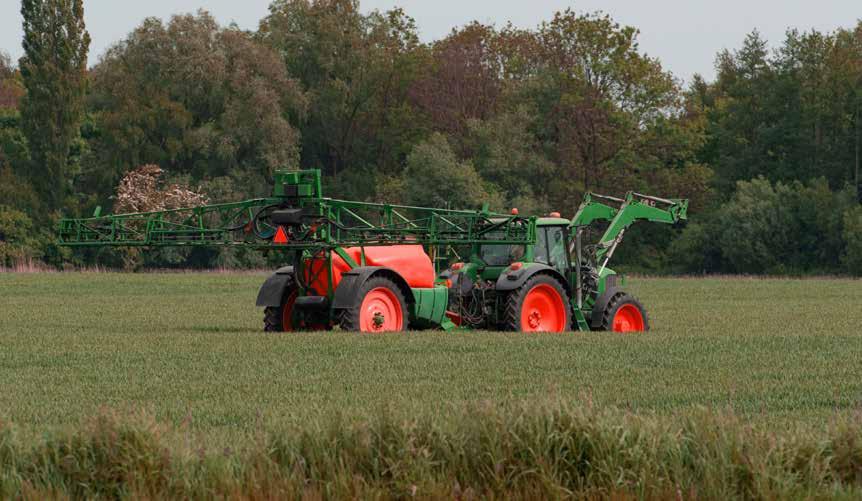
Once fields have been sprayed with a harvest aid, they should be harvested timely. Delaying harvest due to weather or other unforeseen factors can increase lodging problems, which will reduce yield. Harvest aids are also an added expense that is not always needed. Harvest aids will dry leaves and reduce the green material going through the combine, but generally will have minimal to no impact on actual grain moisture.
Products Available to Use as Harvest Aids: Glyphosate and sodium chlorate are the main products used. Aim is also labeled as harvest aids in grain sorghum for desiccation of morningglories and other vines. Gramoxone (paraquat) is NOT labeled as a harvest aid in grain sorghum. In recent harvest aid studies, glyphosate (Roundup Powermax 22oz/A) has provided the best overall kill of the plant, including desiccation of young green sucker heads. Glyphosate has a 7-day pre-harvest interval, and once applied, fields can be harvested approximately 10 days after application if grain moisture is low enough. Glyphosate can be applied to grain

sorghum that is mature (30% moisture), but applying when grain moisture is near 25% moisture will likely minimize the amount of time the plant has to stand in the field waiting for the grain to dry to a dry level of 14%.
Sodium chlorate (3qt/A) is applied closer to harvest, generally 5 days prior to harvest and grain moisture should generally be less than 20%. Hot and dry conditions are typically needed for the best performance of sodium chlorate. There has not been a great benefit of tank mixing glyphosate and sodium chlorate, unless honeydew from sugarcane aphids is present. If honeydew levels are high, adding 1% crop oil to the glyphosate/ chlorate mixture may improve desiccation results. If vines or other broadleaf weeds are present, tank mix 1.0-2.0 oz/A Aim plus 1% crop oil with the glyphosate application.
Timing of Harvest Aids: Harvest aids should only be applied to mature grain sorghum. At physiological maturity, grain will be approximately 30% moisture. In evaluating maturity, examine the lower portion of the head, since the kernels at the bottom
of the head will be the last to mature. If the bottom kernels are still watery, a harvest aid application needs to be delayed until the kernels are more mature. Kernels will develop like corn with a starch line moving from the top of the kernel to the bottom. Once the kernel is mature, a black layer will be evident at the base of the kernel.
Other Considerations – If grain sorghum is going to be sprayed with a harvest aid, spray only what you are capable of harvesting in a couple days. Don’t spray all of your acreage at once and then not be able to harvest timely. Once a harvest aid has been applied and grain moisture is down to an acceptable level, it needs to be harvested timely. In past years if sorghum is left standing in the field 2-3 weeks after a glyphosate application, lodging potential increases dramatically. Once a harvest aid is applied, you are committed to harvesting timely.
For questions on managing your crops, contact the Arkansas County Extension Service at 870-659-2058.
Jay & Megan Mollie, Macie & Micah 2021 South Arkansas County Farm Family of the Year

Love,
Brenda & Johnnie
April, Bradley, Drew & Kathryn

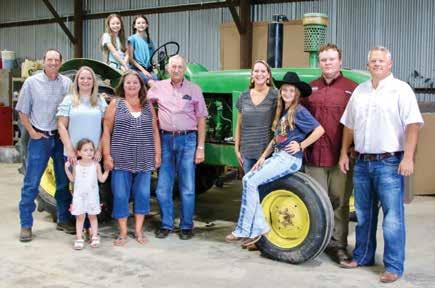
“Lord, You have been our dwelling place in all generations.” -Psalms 90.1
Love,
Vickie & Wilbur Joe
Elizabeth, Kathryn & Nathan
Dona, Seth, Jaycie & Mattie


Jay Mclain has been involved in the NRCS programs for many years. Jay started using soil moisture sensors last year for the crop of 2020 in hopes of being more efficient with irrigations. These sensors are giving him information about how much water his crops are using at all different growth stages. This allows him to schedule his
irrigations based off real in the field data instead of irrigating when he thinks the plants need water. This alone ensures that he is not over irrigating and at the end of the year will also help him determine when his crop has quit using water. The soil moisture sensors he is using are water mark sensors and are placed at depths of 6, 12,
and 18 inches. The sensors are hooked into Aquarius telemetry hubs. These hubs are relaying all of his soil moisture data to his phone which allows him to check his moisture without stepping into the field.
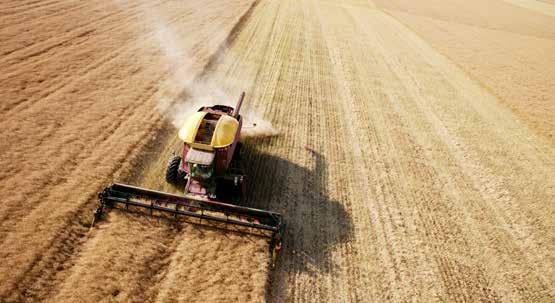
Tractor accidents, grain entrapment and injuries from ornery livestock are just some of the dangers agricultural workers face every day. In fact, the National Institute for Occupational Safety and Health says agriculture is one of the most hazardous industries in the United States.
In 2016, the agricultural industry had a rate of 21.4 deaths per 100,000 workers, and each day agricultural workers experienced 100 non-fatal, lost-work-time injuries.
Agricultural dangers are not limited to North America. In Ireland, farm accidents have increased by 13 percent in the last five years and by 31 percent in the last decade, according to a national survey of farm accidents conducted by the Teagasc National Farm Survey. Furthermore, 97 percent of all farm accident victims required medical treatment.
Farms are dangerous places, and while carelessness can and does contribute to many incidents, accidents also take place during routine, seemingly safe activities. These farm safety guidelines can help lower the risk of injuries.
• Know farm equipment. Read and follow all instructions in the equipment operation manuals. In addition, attend local farm safety workshops to learn more about specific equipment and products.
• Conduct routine safety checks. Look around buildings and grounds for obvious hazards, such as fire hazards and hazardous materials, including farm chemicals that are not stored correctly.
• Practice cleanliness. Maintain clean and neat work areas with tools stored properly and out of the way after use.
• Be mindful of your clothing and hair. Many accidents involve a power take-off
system, or PTO, which is a common component of large rotary mowers, tractors and forage choppers. Clothing can easily get caught in an engaged but unguarded PTO stub. It’s easy for laces or coveralls to become wrapped around a spinning stub shaft. The PTO driveline and other protrusion points also can be dangerous if people do not pay attention.
• Use rollover protection structures. ROPS can be used on tractors and other equipment to prevent injuries. In addition, wear seat belts and employ other safety equipment as advised.
• Avoid extra passengers. It can be tempting to take the kids for a spin, but do not allow additional passengers to ride on agricultural equipment.
• Exercise caution when handling chemicals. Take extra precautions when handling any chemicals, including pesticides.
• Wear protective gear. Wear appropriate gear and equipment as outlined by NIOSH or the Mine Safety and Health Administration. Make sure the skin, feet, ears, eyes, and hands are protected at all times.
• Employ lock out/tag out control. This is a process where one can work on equipment only after every energy source has been controlled, such as hydraulic, pneumatic, mechanical, and electrical, according to Rural Mutual Insurance Company. Turning off equipment and using certain controls or locks on devices can prevent equipment from restarting before it is safe to do so.
Farm safety should be a priority for owners, their families and employees so that agricultural injuries can be reduced.
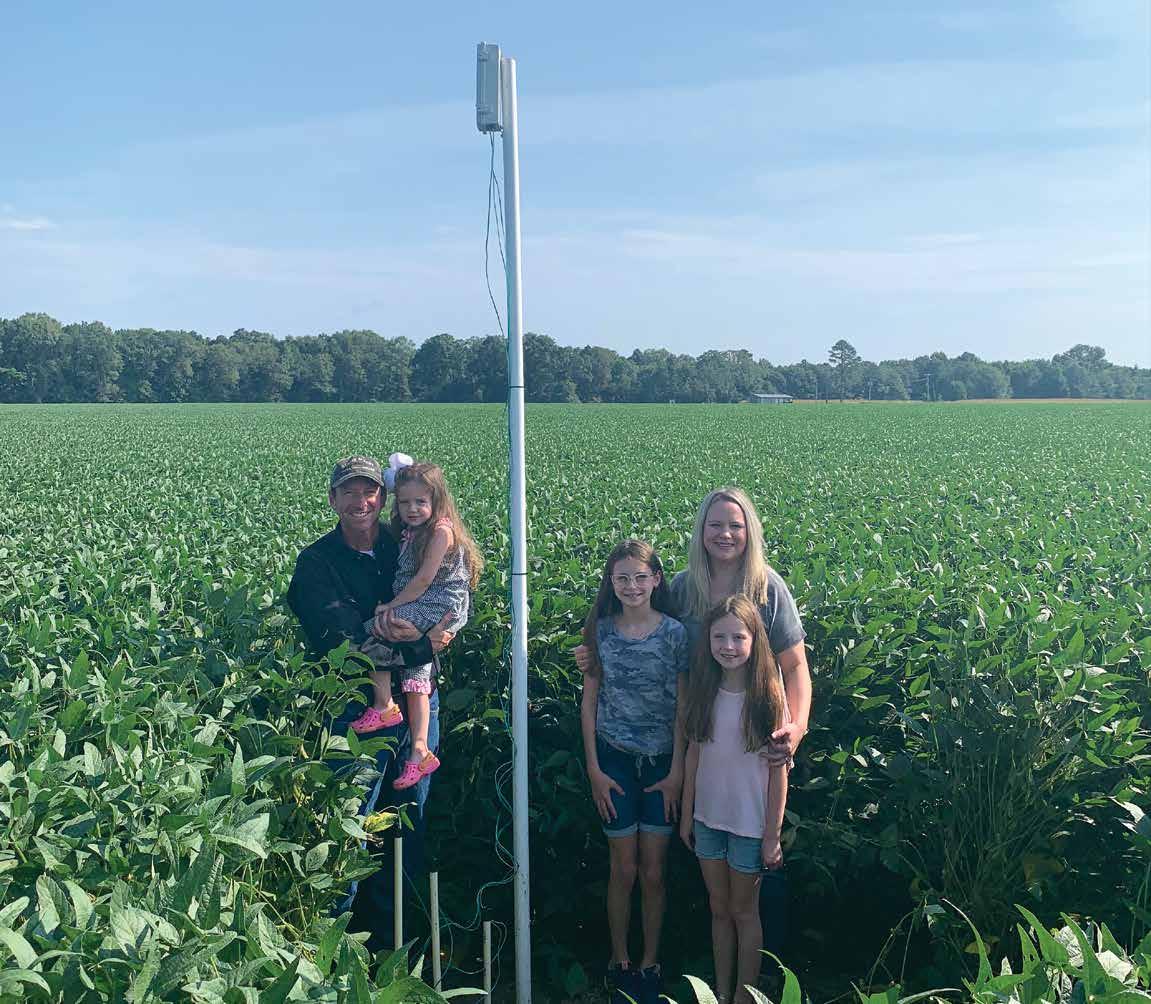
Sloan Hampton - Chairman
Jared Holzhauer | Brandon Bauman
Heath Stephens | Jackie Johnson
Colton Rutherford - Irrigation Water Specialist
Damon Sebree - Feral Hog Technician
Austin Whiting - Technical Assistant


















Soybeans and soybean products are Arkansas’s largest agricultural exports. Arkansas currently ranks 10th in the nation in soybean production, producing more than 150 million bushels annually, valued at more than $1.5 billion.
Soybeans are Arkansas’s largest row crop at 3.1 million acres, accounting for more acres than rice, corn, sorghum and wheat combined.
Almost 85 percent of Arkansas soybeans are irrigated.
Advances in agricultural production have allowed
Arkansas farmers to produce 38.6-percent more soybeans on 32.3 fewer acres today compared to 40 years ago.
Arkansas ranks fourth in the nation in soybean usage. Animal agriculture is the largest consumer of soybeans, consuming some 1.75 million tons of soybean meal, and accounting for $15.98 billion to the state’s economy and some 86,072 jobs.
Mulberry, Arkansas is the edamame capital of the U.S. Around 2,000 acres of edamame are produced by Arkansas farmers. This eda-
mame is consumed by U.S. consumers as well as exported to Asian markets.
Henry Ford thought soybeans were the future; He had his engineers develop a plastic that used soybeans for the frames of his cars in 1935.
One acre of soybeans can produce 82,368 crayons.
During the Civil War, soybeans were used in place of coffee because real coffee was scarce.
April is National Soyfoods Month.
U.S. farmers first grew soybeans as cattle feed.
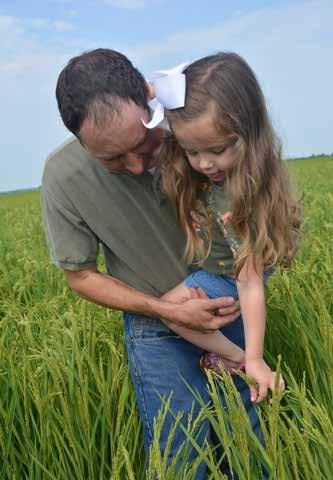



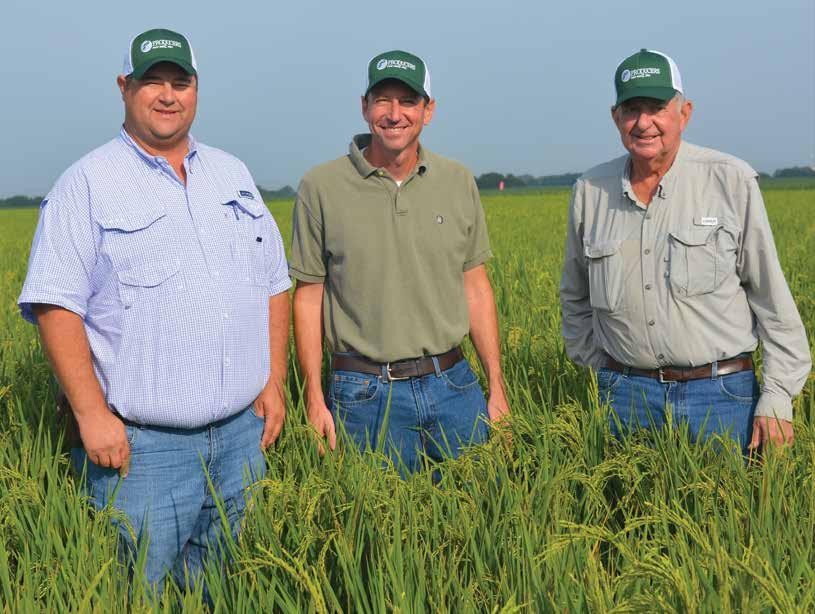

Arkansas is the #1 producer of rice in the United States.
In 2015, Arkansas farmers produced 207,550,200 bushels of rice on 1.286 million acres. That accounted for 49 percent of all the rice produced in the United States. Farmers in Texas, California, Louisiana, Mississippi, and Missouri account for most of the rest.
In 1904 William Fuller became one of the first farmers to grow rice successfully on his farm in Arkansas. By 1910 rice production, research and milling were established in the state.
Each year Arkansas farmers plant an average of 1.3 million acres of rice and harvest over 200 million bushels on 2,752 farms.
Arkansas farmers produce more than 9 billion pounds of rice each year.
Rice is the state’s second-highest-value commodity and its top agricultural export.
The annual Arkansas rice crop contributes billions to the state’s economy and and accounts for approximately 25,000 jobs, crucial to rural communities.




farm family before with Megan’s father, Johnnie Longnecker, Jr. having the honor of being the North Arkansas County farm



family in 1993 and Jay’s father, Wilbur Joe McLain being awarded with the McLain family as the South Arkansas County and District farm family in 1999. Both wanted to return to this area after finishing college at Arkansas State University to live, work and raise their family. Maybe most importantly though, they both know and appreciate the importance of family, friends and neighbors and wanted to grow those roots while they continued to grow their own faith and instilled the importance of strong
roots and the ties that bind in their children.
Jay McLain grew up on the same farm that he currently operates. From early days, he was out with his father, Wilbur Joe McLain, planting, watering, walking and harvesting the crops grown there. Of course, that also meant long days of fixing machinery, dealing with watering schedules, working with the other men on the farm, cleaning up the shop and mowing. There’s always more mowing to be done. As early as pre-school, Jay was


making deals with his mom that if he didn’t’t have to go to pre-school as a 4-year-old, he would go to Kindergarten when the time came without complaint because “dad needed him on the farm,” according to Jay. There was never any doubt or hesitation as to what he wanted to do or become in life. He’s always been a farmer. Throughout his middle school and high school years Jay worked alongside his dad and the men that worked with them. Alton Smith, a distant cousin who worked for Wil-
bur Joe for many years, had a profound impact on Jay as a young man and every now and then you can get an Alton quote from him. Jay was invested in the farm and preferred working and winter hunts to playing sports and other activities. He knew the land and learned the importance of it as some has been owned and farmed by his family for over 100 years now. Jay also dealt with adversity on the farm when his dad was out of commission for harvest one year and he was Continued on following page


left somewhat in charge as he started his sophomore year of high school. Farm neighbors, some of whom are also family, rallied together to help get the crop out and make sure Jay had what he needed. One cousin, Kenny Simpson, whose crop Jay had helped water and harvest a few years prior when he had a health issue of his own told him it was just payback, just how things are done here. Those years and experiences were ingrained and continue to influence the way he operates today. If there is a neighbor in need, Jay and Megan are often found offering to help in any way that they can.
Megan grew up in Stuttgart, taking lunch to the farm with her mom and sister. She attended school at St. John’s Lutheran School through 8th grade where she continues to volunteer and contribute. She also was highly involved with St. John’s Lutheran Church in attendance and volunteering for their fried chicken dinner with the famous desert bar every year. If Megan hasn’t made dessert for you certainly you are missing out. She graduated from Stuttgart High School with many of her dear friends being those she attended St. John’s with for years. Those friends were often found together in the Longnecker home or around Stuttgart. Megan was proud of being the farm family in 1993 until she got stuck in the rice field while taking pictures. She remembers the fun of all the parts of being farm family and the traditions that come along with this honor.
In 1999, the Wilbur Joe McLain family was awarded South Arkansas County farm family. By this time, Jay had graduated from DeWitt High School and was about to begin college. During that time, there was lots going on but Jay continued to work the farm every summer. On weekends, he did not come home he could be found helping out on some friends farm closer to Jonesboro. Jay and Brad Gray became friends through their now wives Megan and Abby Smith Gray who were best friends growing up. Jay and Megan’s roots kept them close to home and closer to family and friends. Jay and Megan met and started dating while they were both at ASU. Megan, having grown up on a farm North of Stuttgart, knew of the long hours and hard work involved in being a farmer and a farmer’s wife. She had watched her own father, Johnnie Longnecker, along with her grandfather, Bo Longnecker, and uncle Mike Longnecker,
do the same kind of work. Megan got her degree and is a Licensed Clinical Social Worker. She worked for several years at the schools in Arkansas County counseling and doing therapy to help youth succeed. She continues
to be involved in the school and works to make the community the best it can be. The sense of community and roots ingrained in and important to the McLain’s is evident. Upon needing a bigger home Jay and Megan de-

cided that rather than build from scratch they would renovate the home where Jay was living before they married. The home was built by Jay’s great great grandparents, Dick and Mollie Pittman. Today it is a place of much
laughter and love. They make sure their own kids spend time with grandparents and on the farm, know their family and the land, build good friendships and give back to the community and are truly experiencing a
farm family life. Being farm family once is an honor. Being a second-generation farm family is appreciated by these two in ways untold as they nurture and grow their roots ever deeper and stronger.




your friends
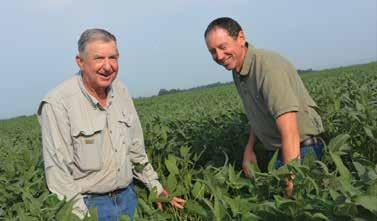


By Kaley Jo Baker
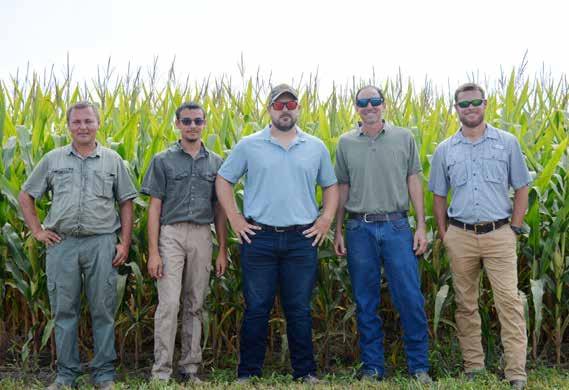

To say the McLain has a great farm crew is an understatement. They have been lucky to have some of the same guys around for many years. The McLain family has been working alongside Austin Thomas since 2013. Daniel Page has also been an employee for many years, beginning in 2016. A challenge Jay has faced over the years is learning to manage employees. When he started his career, his father, himself, and the late Alton Smith were the only three people on the


farm. Alton was more family than an employee and cared as much about the operation as him and his father. His father, Wilbur Joe and Alton both retired in the year of 2017 and it was a little difficult to replace their knowledge and experience. “I have a great group of men now, but I am still learning everyday how to motivate everyone and how much to delegate to each person,” Jay stated. In 2019, they hired two men from South Africa. Dwane and Danie Van As have been with their operation since harvest of 2019. They have been coming during busy season since then and they go back to their home during the winter months. They have been a huge help to the operation and they just brought in Brian Keys, also from South Africa to help out during the 2021 harvest season.
Congratulations to the McLain Family, and thanks for the great business relationship and friendship!



Shopping at locally owned businesses benefits everyone from local business owners to the people they employ to the communities where they operate. As beneficial as shopping local can be for small business owners and the communities where they operate, the planet is perhaps the biggest beneficiary of consumers supporting locally owned small businesses.
The environmental impact of purchasing locally manufactured and sold products is significant. Consumers who choose to use their purchasing power to support local businesses may not realize just how much they’re helping the planet in so doing.
• Shopping local reduces your “food miles.” Large grocery stores get much of their inventory from producers in other countries. Even stores that rely heavily on domestic producers may not limit their domestic partners to local farms. That means products may be traveling thousands of miles before they end up on the shelves in local grocery stores. This is often referred to as “food miles,” and
the more consumers can reduce their food miles, the more they help the planet.
The Center for Climate and Energy Solutions notes that transportation is the largest source of carbon emissions in the United States, so anything consumers can do to reduce the amount of fuel needed to get food from farm to table can greatly benefit the planet.
Shopping local grocers who source their foods from local farms is a simple and effective way to help the planet.
• Shopping local conserves fuel. Much like shopping local reduces reliance on producers who must travel thousands of miles to get their products on shelves in your community, it also reduces the time consumers spend in their vehicles. That conserves fuel and helps to reduce air pollution. That’s an easily overlooked benefit of shopping local, but one that should not be taken for granted. According to the Union of Concerned Scientists, an estimated 150 million Americans are living in areas that do not meet federal air quality standards. Emis-
sions from automobiles are a major source of the pollution that’s behind poor air quality, so anything consumers can do to reduce their fuel consumption, including shopping locally, can greatly benefit the planet.
• Shopping local protects land from developers. Another way shopping local benefits the planet is its link to preserving local farms. When local grocers get their foods from local farms, that increases the long-term sustainability of those farms. If farms are sustainable, they’re more likely to remain in operation. Farms don’t just grow foods, they also provide habitats for local wildlife that helps maintain local ecosystems. That domino effect begins with consumers who support local businesses by shopping local.
Shopping local pays numerous dividends, not the least of which are the many ways supporting local businesses benefits the environment.
By Grant Beckwith County Extension Agent - Agriculture/Staff Chair
HARVEST AIDS IN RICE
Harvest Aid Do’s and Don’t
The past few years we have revisited some work on using sodium chlorate as a harvest aid in rice. Roughly 30-40% of acres on average receive a sodium chlorate application to help with har-
cut-off for medium grains, especially Titan. Long grains may be able to cheat below 18% but harvest must start immediately.
• The lower the grain moisture at time of application, the more you should consider using a lower rate of sodium chlorate. A 1- gallon rate of 5 lb. material is an
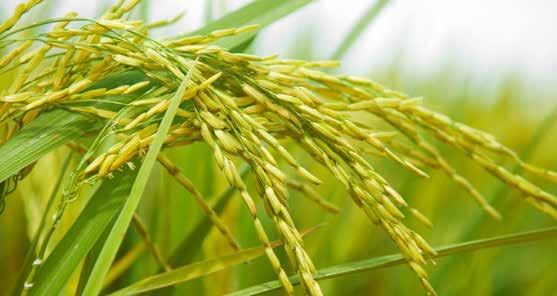
vest, but there are some critical things to keep in mind to make these applications successful while minimizing risk.
• Complete rice harvest in 5 days or less after application of sodium chlorate. Any longer and heavy dew and/or rain can reduce milling yield. Excessive drying of panicle branches can increase shattering potential and excessive plant desiccation can increase lodging. The greatest losses in research trials have been observed from waiting over 5 days to harvest. You can get lucky if conditions happen to be favorable, but the losses can be substantial if conditions are poor.
• Do not salt varieties until grain moisture is below 25%.
• Do not salt hybrids until grain moisture is below 23%.
• Once grain moisture falls below 18%, do not salt the rice. This is an absolute
effective rate, especially at higher moisture rice, but as rice approaches lower ranges, a 0.5-gallon rate may be justified to decrease the risk of over-drying the rice.
HARVEST AIDS ARE EFFECTIVE:
• Used to desiccate foliage, but also reduce grain moisture.
• When used properly, does not reduce head rice yields.
• When applications are made within recommended moisture range and harvested in less than 5 days, generally no grain yield or milling yield losses are observed.
• Optimal harvest grain moisture for Long Grain Cultivars is 19 to 21 percent.
• Optimal harvest grain moisture for Medium Grain Cultivars is 22 to 24 percent.
MANAGING ROW CROP RESIDUE BURNS
As we progress thru harvest season, we will start
managing crop residue in fields. A number of organizations have been involved in the past few years in developing the “Arkansas Voluntary Smoke Management Guidelines for Row Crop Burning” for a better understanding of all aspects of burning. At the end of the day, you need to know these items:
1. Call the Arkansas Agriculture Department’s (AAD) Dispatch Center at 1-800830-8015.
2. Give them name, location of field, acres, crop type, and time of planned burn.
3. Get a burning recommendation!
A FEW MAJOR DON’T ITEMS:
• DO NOT BURN if winds exceed 15 mph.
• DO NOT BURN if humidity is below 20%.
• DO NOT BURN when the wind direction could send smoke directly into roadways or communities.
• DO NOT leave your fire unattended.
With your help, we can effectively burn crop residue to eliminate pests and minimize tillage, while keeping our fires under control and out of our communities.

LITTLE ROCK, AR – The U.S. Department of Agriculture’s (USDA) Foreign Animal Disease Diagnostic Laboratory has confirmed African Swine Fever in samples collected from pigs in the Dominican Republic. This is the first detection of African Swine Fever in the western hemisphere since 1978.
“This detection should serve as an important reminder to everyone involved in the swine industry or who has contact with swine in any way to enhance their surveillance and biosecurity measures against this highly contagious and deadly viral disease affecting both domestic and feral swine,” said Wes Ward, Arkansas Secretary of Agriculture. “While African Swine Fever is not a human health threat or a food safety issue, an outbreak in the United States would be devastating to the swine industry in Arkansas and across the country.”
As of December 1, 2020, USDA estimated that Arkansas had 126,000 hogs and pigs with a production value of $40.3 million. The most recent USDA Census of Agriculture reports that Arkansas had 1,021 farms with at least one hog or pig.
International travelers should also be aware of African Swine Fever to avoid unknowingly carrying the disease into the United States. Travelers should follow all USDA guidelines regarding bringing back agriculture items or souvenirs, reporting contact with pigs or swine farms while on travel, and disinfecting protocols prior to contact with pigs in the United States. More information for international travelers can be found at https://bit.ly/3BOIvtL.
Because there is no treatment or vaccine available for African Swine Fever, the only way to stop the disease is to depopulate all affected or exposed swine herds.
Good on-farm biosecurity is crucial to preventing African Swine Fever and other animal diseases from developing and spreading. Each farm should have a biosecurity manager and a strict biosecurity plan that includes the following:
Adhere to strict biosecurity measures following international travel and ask visitors about recent international travel.
Wear site-specific boots and coveralls and keep them onsite. Provide disposable coveralls for visitors.
Keep detailed records of all people, vehicles, and equipment at the farm.
Isolate sick animals from the herd and keep them away from visitors.
Isolate all animals entering or re-entering the herd.
Do not allow human food brought onsite to enter animal areas.
Do not feed garbage to animals, to include carcasses, meat products, meat by-products or food containing animal proteins.
Prevent direct and indirect contact between animals in the herd and feral swine.
“Arkansas pork producers are encouraged to develop a Secure Pork Plan which can help maintain continuity of business," says John G. Nilz, DVM, Acting State Veterinarian. Tools for development of a Secure Pork Plan are avail-
able at http://www.securepork.org/.
Anyone working with pigs should be aware of the following signs of African Swine Fever:
High fever
Decreased appetite and weakness
Red, blotchy skin or skin lesions
Diarrhea and vomiting
Coughing and difficulty breathing
Any pigs with these signs should be reported to the Arkansas Department of Agriculture’s Livestock and Poultry Division at 501-225-1598 or email john.nilz@agriculture. arkansas.gov or patrick.fisk@agriculture.arkansas.gov.
Anyone finding a sick or dead feral hog with no obvious injury or cause of death should also report it immediately.
A copy of the USDA Statement on Confirmation of African Swine Fever in the Dominican Republic and other important information about African Swine Fever is available at: agriculture.arkansas.gov/african-swine-fever-confirmed-in-dominican-republic/.
The Arkansas Department of Agriculture is dedicated to the development and implementation of policies and programs for Arkansas agriculture and forestry to keep its farmers and ranchers competitive in national and international markets while ensuring safe food, fiber, and forest products for the citizens of the state and nation. Visit agriculture.arkansas.gov/. The Arkansas Department of Agriculture offers its programs to all eligible persons regardless of race, color, national origin, sex, age, or disability and is an Equal Opportunity Employer.
LITTLE ROCK, AR – The Arkansas Department of Agriculture is now accepting applications from producers for reimbursement under the United States Department of Agriculture (USDA) National Organic Certification Cost Share Program. Organic certification fees paid between the dates of October 1, 2020 – September 30, 2021, are eligible. Applications for reimbursement are available, here, and are due by November 1, 2021.
Reimbursement for 50% of eligible certification costs up to $500 is available for operators who have been certified by a USDA accredited certifying agent. Certification costs that have already been reimbursed through the USDA-Farm Service Agency or other agencies are not eligible. The Arkansas Department of Agriculture administers the USDA National Organic Program Organic Certification Cost Share Program through funding provided by USDA.
“Anything we can do to help offset costs for Arkansas producers is a win for agriculture, which is our state’s top
industry,” says Arkansas Agriculture Secretary Wes Ward. “We appreciate the opportunity to partner with the USDA on this program that provides important cost-share assistance to an expanding sector of Arkansas’s agricultural industry,” says Ward.
According to the latest data available from the USDA National Agricultural Statistic Service, organic production in Arkansas has grown significantly since 2012. From 2012 to 2019, the number of farms selling organically produced commodities increased from 32 farms to 67. Sales of organic products increased from $789,000 in 2012 to over $55 million in 2019, an increase of almost 6,900 percent.
For questions about the application or the reimbursement process, contact Karen Reynolds at 501-529-1630 or karen.reynolds@agriculture.arkansas.gov.
The Arkansas Department of Agriculture is dedicated to the development and implementation of policies and programs for Arkansas agriculture and forestry to keep its

farmers and ranchers competitive in national and international markets while ensuring safe food, fiber, and forest products for the citizens of the state and nation. Visit agriculture.arkansas.gov/. The Arkansas Department of Agriculture offers its programs to all eligible persons regardless of race, color, national origin, sex, age, or disability and is an Equal Opportunity Employer.

By Kaley Jo Baker
Each year, Mollie and Ma-
to take to make the perfect homemade muscadine jelly.

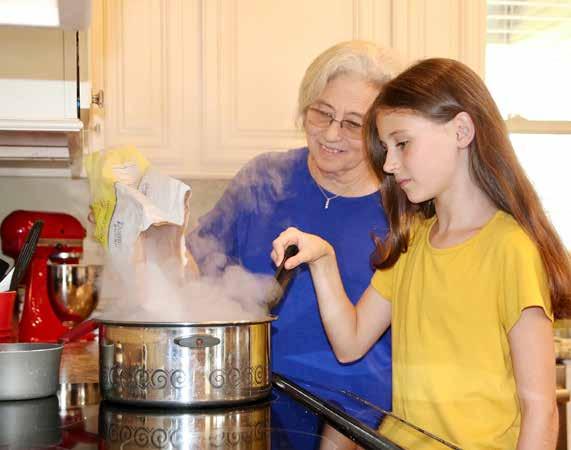


LITTLE ROCK, AR –
The Arkansas Department of Agriculture (Department) recently provided $1,770,272 in funding to Arkansas fairs for 2021.
This funding includes $724,272 in agri fair funding to county fairs, the Four States Fair, the Arkansas-Oklahoma Fair, and the Arkansas State Fair, and construction funding totaling $1,046,000 to county and district fairs.
“Fairs are great venues to showcase our state’s largest industry and they provide opportunities for Arkansas youth to learn more and be involved in the agriculture industry,” said


Secretary of Agriculture
Wes Ward. “We hope that fairs across the state will be able to have their scheduled events this year after the Coronavirus forced many events to cancel last year.”
Agri fair funding is paid to help cover costs of fair operations and other fair-related expenses. Construction funding has historically been paid to counties and districts every other year to cover routine maintenance and/or improvements to fair facilities. In 2021 the Arkansas General Assembly granted recipients of construction funding flexibility to utilize the funding to defray other unavoidable expenses and
needs created by the Coronavirus.
Livestock and Poultry Division inspectors provided thousands of hours at fairs across the state to complete health inspections of exhibition animals and to ensure that the applicable animal health regulatory requirements are satisfied. In 2019, the last full year of fair events before the Coronavirus, Livestock and Poultry inspectors provided 3,626 hours at 76 Arkansas fairs.
“It’s an honor to partner with fairs across the state
to help promote Arkansas agriculture while also helping ensure the health of exhibition animals and the livestock and poultry industries,” said Patrick Fisk, Director of the Department’s Livestock and Poultry Division.
The Arkansas Department of Agriculture is dedicated to the development and implementation of policies and programs for Arkansas agriculture and forestry to keep its farmers and ranchers competitive in national and internation-
al markets while ensuring safe food, fiber, and forest products for the citizens of the state and nation. Visit agriculture.arkansas.gov/. The Arkansas Department of Agriculture offers its programs to all eligible persons regardless of race, color, national origin, sex, age, or disability and is an Equal Opportunity Employer.
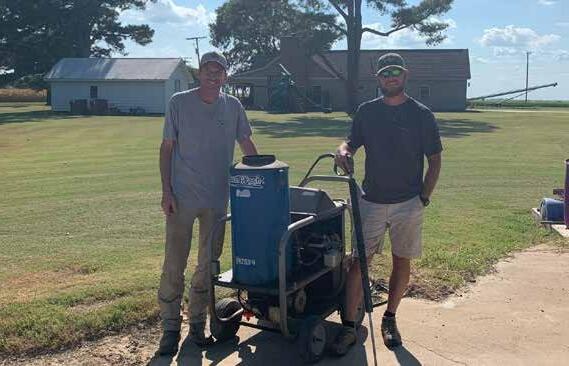
As printed from The Encyclopedia of Arkansas History & Culture website
The Arkansas Farm Family of the Year program was started in 1947 to recognize the importance of the farm family and agriculture in the continuing development of the state. It is the longest running farm family recognition program in the country.
The primary emphasis of the program is recognizing county farm families and the importance of agriculture in the county. The specific objectives of the program are, first, to recognize and encourage farm families who are doing an outstanding job in farming, homemaking, and community leadership; second, to highlight the importance of agriculture to the economy of the community and the state; and third, to disseminate information on improved farm practices and effective farm and home management. The selection of district families and a state family is incidental to the county recognition. County families, district families, and the state family are not referred to as “winners,” as this is not supposed to be a competition but a recognition program.
Any farm family may be considered by county committees to represent their county in the annual program. Committees usually are made up of the county extension agent, the publisher of the county newspapers (or publishers, if there are more than one), and other people working in or otherwise interested in agriculture. Committees select families in June and July to represent their counties. Each family fills out a comprehensive report book, covering their history of farming experience, farm production (crops, livestock, pastures, marketing), farm and family financial management (record keeping system, managing expenses, financial management), environmental and conservation efforts (energy management), family life (foods, home improvements, home furnishings, energy management, clothing, landscaping), and leadership and community service.
Three person judging teams usually visit every county farm family within eight districts (eight to ten counties) over three days in August to select District Farm Families of the Year. Then, in September, another three person team visits each of the eight District Farm Families over four days and selects one of them as the State Farm Family of the Year. The announcement is usually made the first or second Friday in December, Arkansas Farm Family Day.
Ross Mauney, who joined Arkansas Power and Light (AP&L—now known as Entergy) from the County Extension Service, is given credit for starting the agriculture program that led to today’s Arkansas Farm Family of the Year program. His idea was to promote agriculture in the state as a natural outgrowth of AP&L’s building power lines in rural Arkansas. Most other states had some sort of agriculture program, but Arkansas did not. The Arkansas Press Association (APA) joined AP&L as an original cosponsor. Other cosponsors were various divisions of the United States Department of Agriculture (USDA), the University of Arkansas Cooperative Extension Services (UACES), and the Arkansas Department
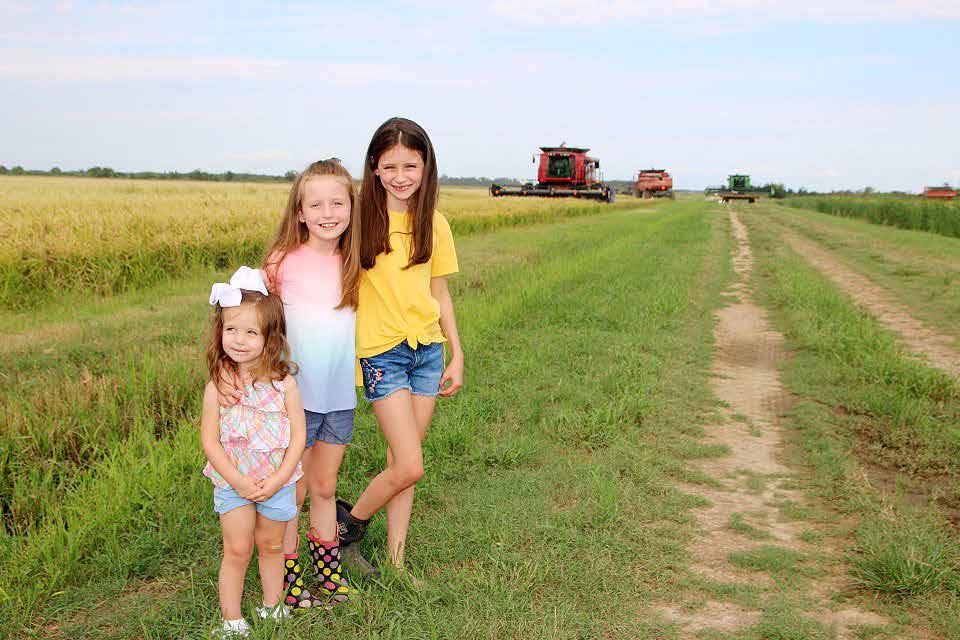
of Workforce Education. In 2003, the Arkansas Farm Bureau was added as a cosponsor, and in 2005, it became one of the lead sponsors, with APA and Entergy. Late in 2006, the three farm credit services in Arkansas joined the program as sponsors.
The original program was called the Arkansas Balanced Farm Program. There were three divisions: Tenant and Sharecropper, Landowner, and Plantation. In addition, tenants and sharecroppers had a Home Improvement Division. The first place in the Landowner Division was considered the Arkansas State Farm Family of the Year. In 1960, this multidivisional format was abandoned as too complicated, and the several divisions were combined into one, the present format. There was a separate Negro Division of the original program, but it was discontinued in the mid1960s.
The annual Farm Family Day has been officially proclaimed by each governor, from year to year. The day usually consists of slides shown of each county farm family in the morning, an awards luncheon honoring the eight district farm families
and announcing the state family, and a reception with the governor in the afternoon. The day’s activities were held for many years at a Little Rock (Pulaski County) hotel. In 1980, when the 4-H Educational Center was completed near Ferndale (Pulaski County), west of Little Rock, the day’s activities were moved there and have been held there ever since.
In late 2006, the Arkansas Farm Family of the Year program joined the Southeastern Farmer of the Year program. That program, established in 1990, now has ten participating states (Alabama, Arkansas, Florida, Georgia, Kentucky, Mississippi, North Carolina, South Carolina, Tennessee, and Virginia). The Arkansas State Farm Family will be eligible for the regional program, which awards cash prizes to state finalists and to the regional farmer of the year. The regional family is announced each October at the annual Sunbelt Agricultural Exposition in Moultrie, Georgia.

1957-W.W Turner, Tichnor & Clifford Jacobs, Bayou
Meto
1958-W.E. Vansickle, Tichnor & George Milliken, Bayou Meto
1959-
1960-William Mommsen, Almyra
1961-Elmer Ferguson, DeWitt
1962-Tom Hasty, Crocketts Bluff
1963-Herbert Holzhauer, Gillett
1964-Emmet Almond, Van
1965-Denny Hudspeth, DeWitt
1966-Frank C. Wolfe, Gillett
1967-Bill Rasco, DeWitt
1968-Bill Dupslaff, St. Charles
1969-Johnny Holzhauer, Gillett
1970-L.W. Schlenker, Tichnor
1971-Charles H. Miller, DeWitt
1972-Darrell Richter, Gillett
1973-Mark Berry, DeWitt
1974-Waymon Hornbeck, DeWitt ***
1975-James C. Place, DeWitt **
1976-Billy C. Boyd, DeWitt ***
1977-Donnie Stroh, DeWitt
1978-Marion Berry, Gillett
1979-Sam Vittitow, DeWitt ***
1980-Keneth Smith, Tichnor **
1981-Bill Wallace, Gillett
1982-Eddie Lumsden, DeWitt
1983-John Cover, Gillett
1984-Dickie Allen, DeWitt
1985-Charles Rodgers, Dewitt ***
1986-Walt Lowe, Gillett
1987-Terry Turner, DeWitt
1988-Jerry Fly, DeWitt
1989-Dan Eldridge, DeWitt
1990-Richard Gordon, Gillett
1991-Shawn Hudspeth, DeWitt
1992 Billy Gene Eason, DeWitt
1993-Larry Smith, Tichnor
1994-Jeff Hornbeck, DeWitt
1995-Keith Patterson, DeWitt ***
1996-Dennis Dixon, Tichnor
1997-Terry Whiting, Tichnor ***
1998-Mark Simpson, DeWitt/Van
1999-Wilber Joe McLain, DeWitt ***
2000-Mark Hargrove, DeWitt
2001-Drew Counce, DeWitt/Crocketts Bluff
2002-Jerry Rodgers, DeWitt
2003-Sammy Ray Whiting, Tichnor
2004-Danny Hearn, DeWitt
2005-Mitch Miller, DeWitt
2006-Thayn Morton, DeWitt
2007-Frankie Hargrove, DeWitt
2008-J & M Farms (Jody Holzhauer & Mike Dodson), Gillett ***
2009-Mibek Farms (Michael & Becky Knoll), DeWitt *** 2010-David Neal, DeWitt
2011-Heath Long, Tichnor **
2012-Jared Holzhauer, Gillett
2013-Lance Padgett, Ethel
2014-Sloan Hampton, Hagler ***
2015-Greg, Julie, Jack and Ben Hackney, Gillett***
2016-Scott and Karen Place, Gillett
2017-James and Eddie Phillips, Crocketts Bluff
2018-Dean and Tawana Watson Farm Partnership, St. Charles***
2019-Gary and Megan Padgett, Almyra
2020- Turner IV Farms
2021- Jay and Megan McLain ** Indicates State Winner, *** Indicates District Winner
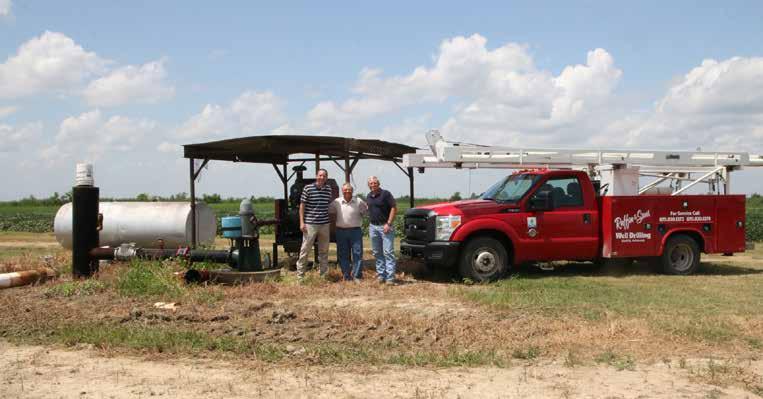

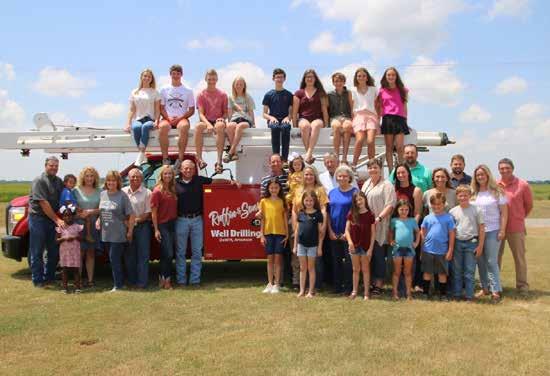


Eight district Farm Families have been named in the 74th annual Arkansas Farm Family of the Year program, representing the diversity of Arkansas agriculture, the state’s largest industry.
The district winners will now be judged to determine a state winner who will be announced Dec. 9 at the Farm Family of the Year Luncheon.
The District Farm Families of the Year are:
East Central District: Cottonwood Farms/the Trail Family of Widener (St. Francis County) – The Trail family, a multi-generation farm family, operates Cottonwood Farms. They grow corn, cotton, soybeans and milo on 17,500 acres. The family has been farming for 36 years.
North Central District: Dennis & Tracy Broadwater and Family of Batesville (Independence County) – The Broadwater Family has been farming for 60 years. Currently, they raise hay and cattle on 470 acres. They have two adult children, Laura and Sally, and four grandchildren.
Northeast District: Cobb/Lyerly/ Owens Farms of Lake City (Craighead County) – The Cobb/Lyerly/ Owens Partnership grows corn, cotton, peanuts, soybeans and greenhouse tomatoes on 4,250 acres in addation to raising swine. The family has been farming for 50 years.
Northwest District: Kaleb & Chrisie Smith of Gentry (Benton County) – The Smiths raise registered Brangus and commercial cattle, in addition to being co-owners of Cattlemen’s Feed, LLC. They have been farming for 11 years and have two children, Paden and Paxton.
Southeast District: Layne & Ryane Miles of McGehee (Desha County) – Layne Miles and his wife Ryane farm on 10,700 acres where they grow irrigated corn, soybeans, cotton and rice. The Miles family has been farming for six years and have two children, Luke and Owen.
Southwest District: Cody & Ashlee Askew of Hope (Hempstead County) – The Askews have 1,440 acres where they raise cattle and swine as well as grow hay, pecans, corn silage and timber. They have been farming for 21 years and have two sons, Levi and Eli.
West Central District: Kent & Anita Malcom of Okolona (Clark County) – The Malcoms have been
farming for 40 years. They raise Charolais cattle and hay on 959 acres, in addition to a 30-acre plant nursery. They have two adult children and a grandson.
Western District: Foshee Family Farms/Paul & Carolin Foshee and Family of Atkins (Conway County) – The Foshees have been farming for 37 years and have more than 2,300 pecan trees in addition to pine trees on 122 acres. They have three children and six grandchildren who are involved in the farm, as well as five great grandchildren.
“What a great reflection on Arkansas agriculture,” said Rich Hillman, president of Arkansas Farm Bureau. “The impact of our farm families is immeasurable. The contributions made to our communities, state and economy by our state’s farm families is astounding.”
The Farm Family of the Year program begins each year with selection of top the farm families in each county and culminates with the selection of the state Farm Family of the Year who will then go on to represent Arkansas in the Southeastern Farmer of the Year competition. Arkansas has had two farmers receive the title of Southeastern Farmer of the Year, Brian Kirksey of Clark County in 2008 and Wildy Family Farms of Mississippi County in 2016.
All winners are judged on their farm production, efficiency, management, family life and rural/community leadership.
Sponsors of the Farm Family of the Year program are Arkansas Farm Bureau, the Electric Cooperatives of Arkansas and the three Farm Credit agencies that serve Arkansas: AgHeritage Farm Credit Services, Farm Credit of Western Arkansas and Midsouth Farm Credit. Additionally, support for the program is provided by the Arkansas Agriculture Department, Arkansas Department of Career Education, Arkansas Press Association, University of Arkansas Division of Agriculture and the USDA’s Farm Service Agency, Natural Resources Conservation Service and Rural Development.
Arkansas Farm Bureau is a nonprofit, private advocacy organization of roughly 190,000 families throughout the state working to improve farm and rural life.



We have greatly enjoyed working with you, and are so proud of your








